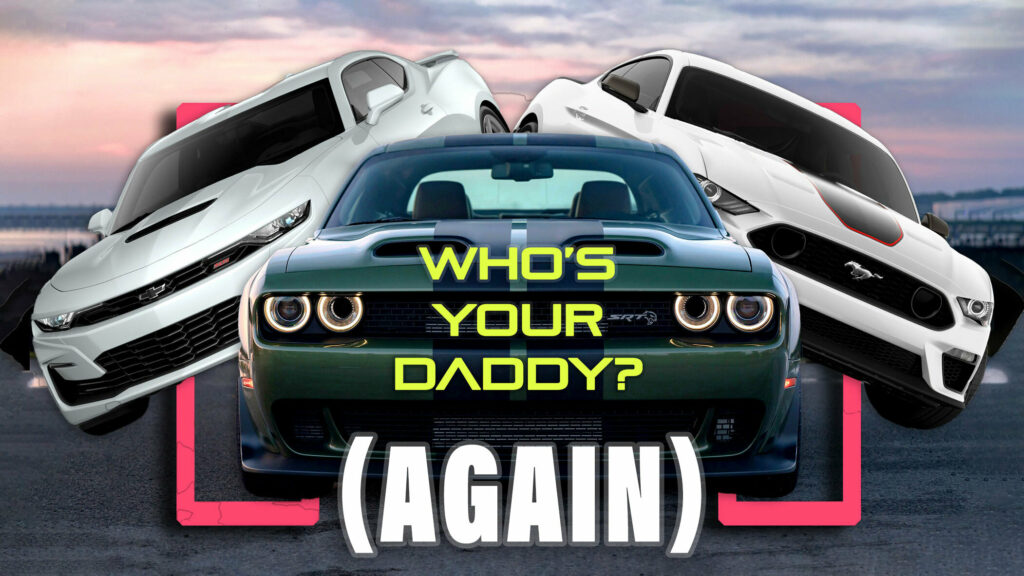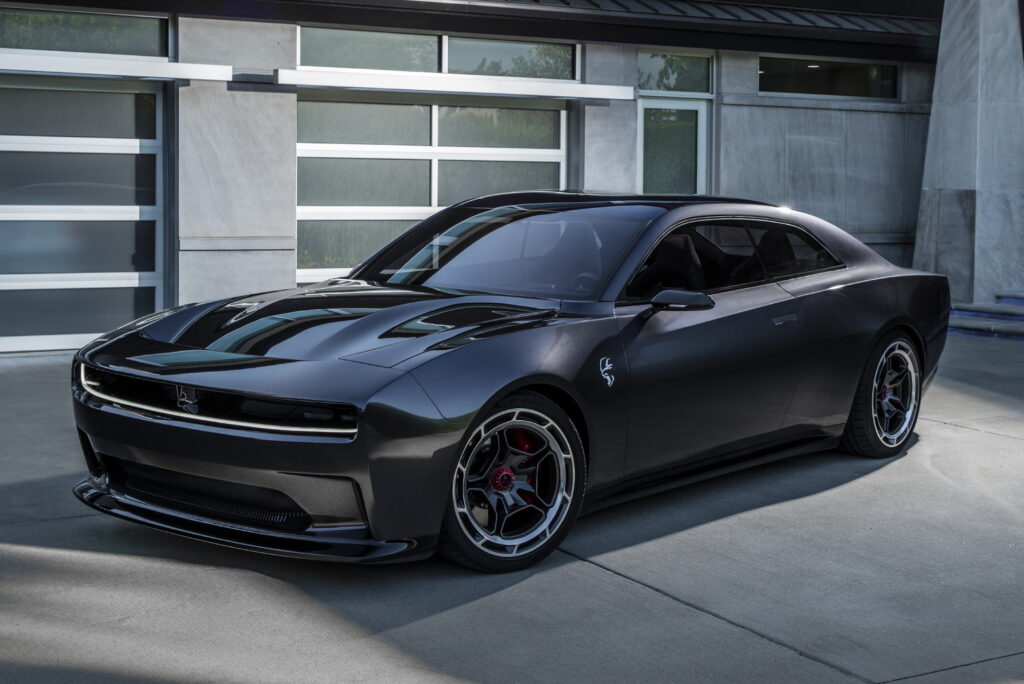The L platform’s run is over, and the final ever example of the Dodge Challenger and Charger, as we know them today, rolled off the production line in Brampton, Ontario, Canada, on December 22. The final 300 rolled off the line on December 20.
A reliable source tells us that the final 300 was a Velvet Red 300S, while the final Charger was a Destroyer Gray Scat Pack Widebody. The final Challenger was an appropriately mournful example, and was finished in Pitch Black. However, it will not go gentle into that good night, since it is a hell-raising SRT Demon 170 edition.
While Stellantis hasn’t revealed images of the very last production car (our opening photo is from the final batch of Dodge Chargers, Challengers, and Chrysler 300s being produced at the plant this month), we expect it to be made public soon.
The Dodge Charger, Challenger, and the Chrysler 300 will now cede their place in the Stellantis lineup to new electrified vehicles. After almost 20 years in production, the model family has certainly had a good run, but their loss will be a sad one for the workers who made them.
Read: Last Hemi-Powered Chrysler 300C Leaves The Factory
“Our members have worked six days a week for a long period of time,” Vito Beato, the president of Unifor Local 1285, which represents the Brampton plant’s workers, told Autonews Canada. “Even though we see it every day, we still get a kick out of it, too, when we hear those cars coming off the end of the line.”
The final Challenger they get to hear roll off the line will certainly make an appropriately impressive noise. An inside source confirmed that it is an SRT Demon 170 model, which means that its supercharged 6.2-liter Hemi V8 can make up to 1,025 hp (764 kW/1,039 PS) on E85 fuel, and it will be able to run the quarter-mile in 8.9 seconds.
An 8.9 Second End To A Very Long Story
Despite having entered production in 2005, vehicles based on the “L Car” platform have had remarkable staying power. Over the course of their run, a total 4.3 million examples (including the short-lived Dodge Magnum) have sold. Even the workers who make it are surprised by its lasting appeal.
“Usually when you go long in the tooth with products, the sales tend to decrease,” said Beato. But with the Challenger, Charger, and 300, “the sales have gotten better and better over the years.”
Indeed, through the first three-quarters of 2023, the Challenger was the best-selling car in its class, beating the Ford Mustang and the Chevrolet Camaro, which has also been discontinued to make way for electrified vehicles.
Although it’s now clear that the car and its siblings were a success, the merits of a rear-wheel-drive sedan family were not always apparent to Dodge. Ralph Gilles, Stellantis’ design director, said that he had to fight to get the cars onto the road when they were being planned in the mid-2000s. He says that it was worth it, though. Being allowed to lead the team behind the Challenger, in particular, was always a highlight of his job.
More: 14-Year-Old Dodge Challenger Dusts Mustang And Camaro Outselling Both

“It’s just a fun canvas to play with,” Gilles said. “I can’t tell you how many hoods we’ve done for that vehicle, and fascia and wheels and all kinds of derivative models in terms of buzz models that have caught on and really have their own subculture that supports them.”
In some ways, the spirit of the modern Challenger will live on. Although Dodge called its electric muscle car concept the Charger Daytona SRT Banshee, it has two doors like the Challenger, and Gilles said that’s not just for show. The automaker is seriously considering making the production version a two-door. With design cues borrowed from classic Chargers of the ’60s and ’70s, the brand is taking a chance with the model.
“That is a big grand experiment,” he said. “For me it’s a bit of a correction to say you’ve been asking for this car for 40 years now, so let’s see what happens.”





